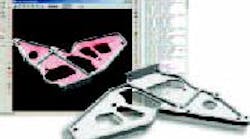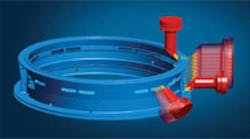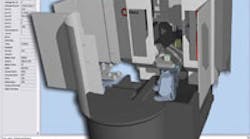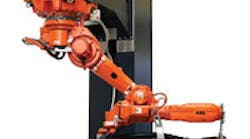Within BobCAD-CAM V20, an automatic tapered-wall pocketing wizard lets operators choose tools, roughing, finishing, and Z-level control for outer-wall and inside-island taper angles.
Stafford, U.K.-based Rail-Ability accelerates designs of vehicles that lay rails, build platforms, and keep railroads safe using SolidWorks 3D mechanical-design software. It gives the railway-maintenance-equipment maker an edge over competitors by cutting days out of production development, while CosmosXpress design-analysis software eliminates errors to speed new-product introductions.
The software's part-mating, cross-sectional views, and associativity are some of the features that speed the design process. According to Adrian Clayton, design engineer at Rail-Ability, SolidWorks provides a stable design environment free of crashes that slowed product development with the company's previous system.
Because the software simplifies part configuration, Rail-Ability engineers try several different variations on length, diameter, and more with a few mouse clicks. This ability lets them quickly explore other product options, complete designs, and check accuracy with CosmosXpress.
Previously, engineers manually double-checked calculations for every component, which often took one engineer a week to complete. CosmosXpress reduced that time to two days.
The engineers now identify and fix any design issues before manufacturing. "CosmosXpress is a huge benefit because it lets us know that the design fits its purpose," says Clayton.
With SolidWorks eDrawings e-mail-enabled collaboration tool, Rail-Ability shares designs with suppliers who can ensure their parts fit exactly into the solid model of a converted excavator, for instance, or other railway-maintenance equipment. It also uses SolidWorks FeatureWorks to import legacy data from Autodesk Inventor into SolidWorks for reuse in future designs. SolidWorks DWGEditor then lets engineers edit legacy AutoCAD 2D drawings in their native format and convert them into 3D solid models for future product design.
SolidWorks Corp.
Concord, Mass.
solidworks.com






